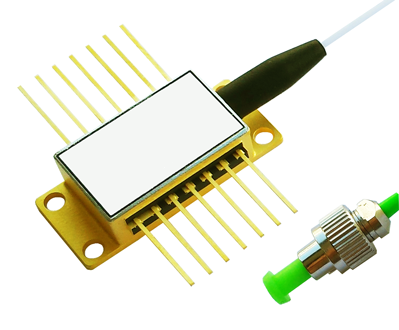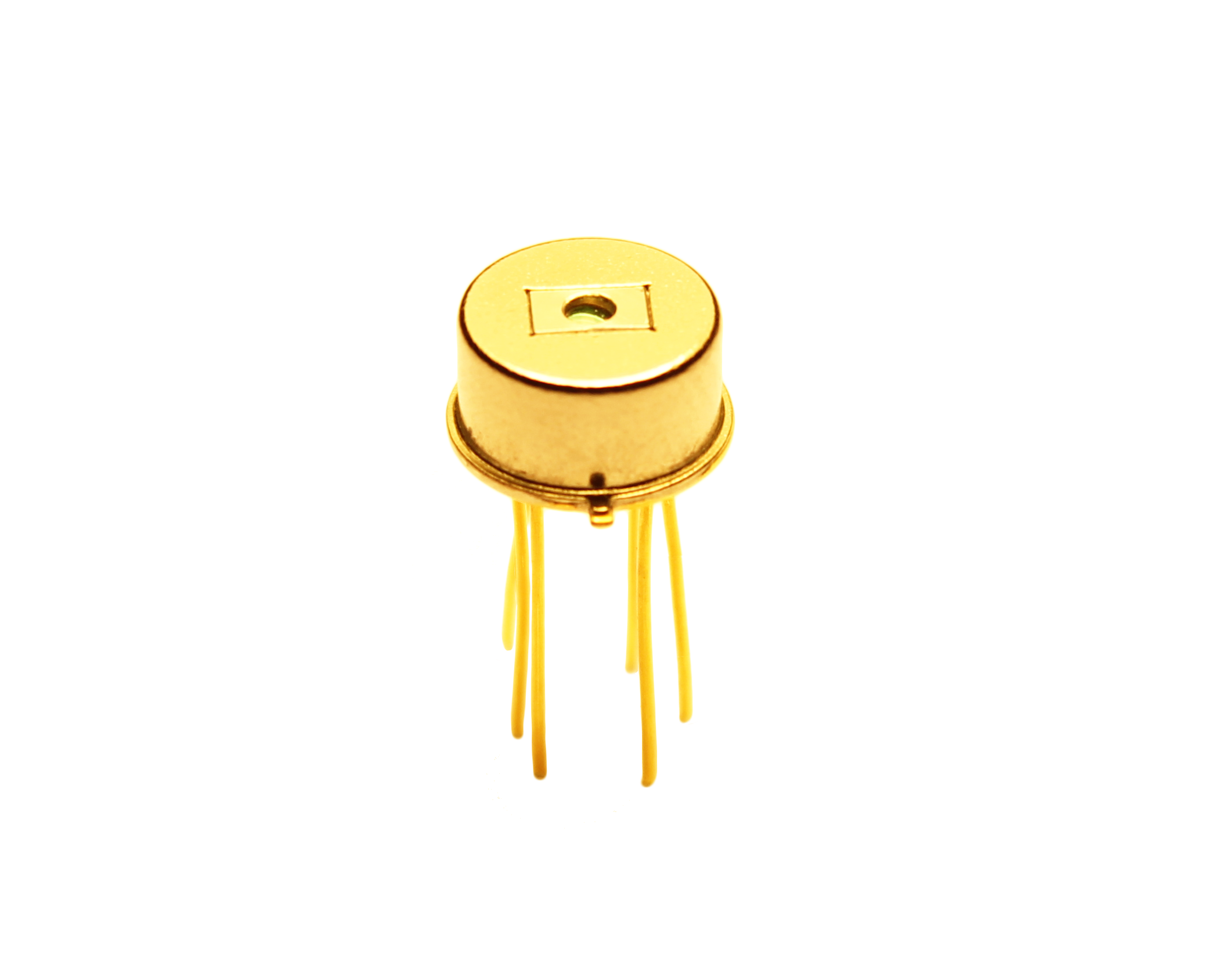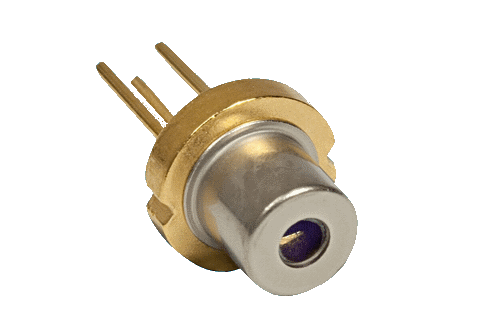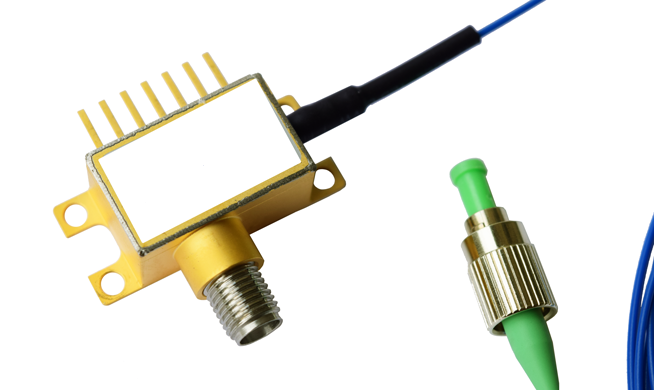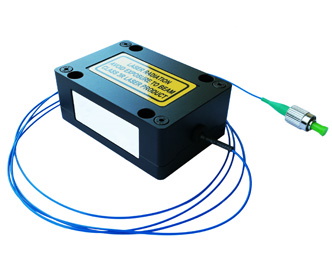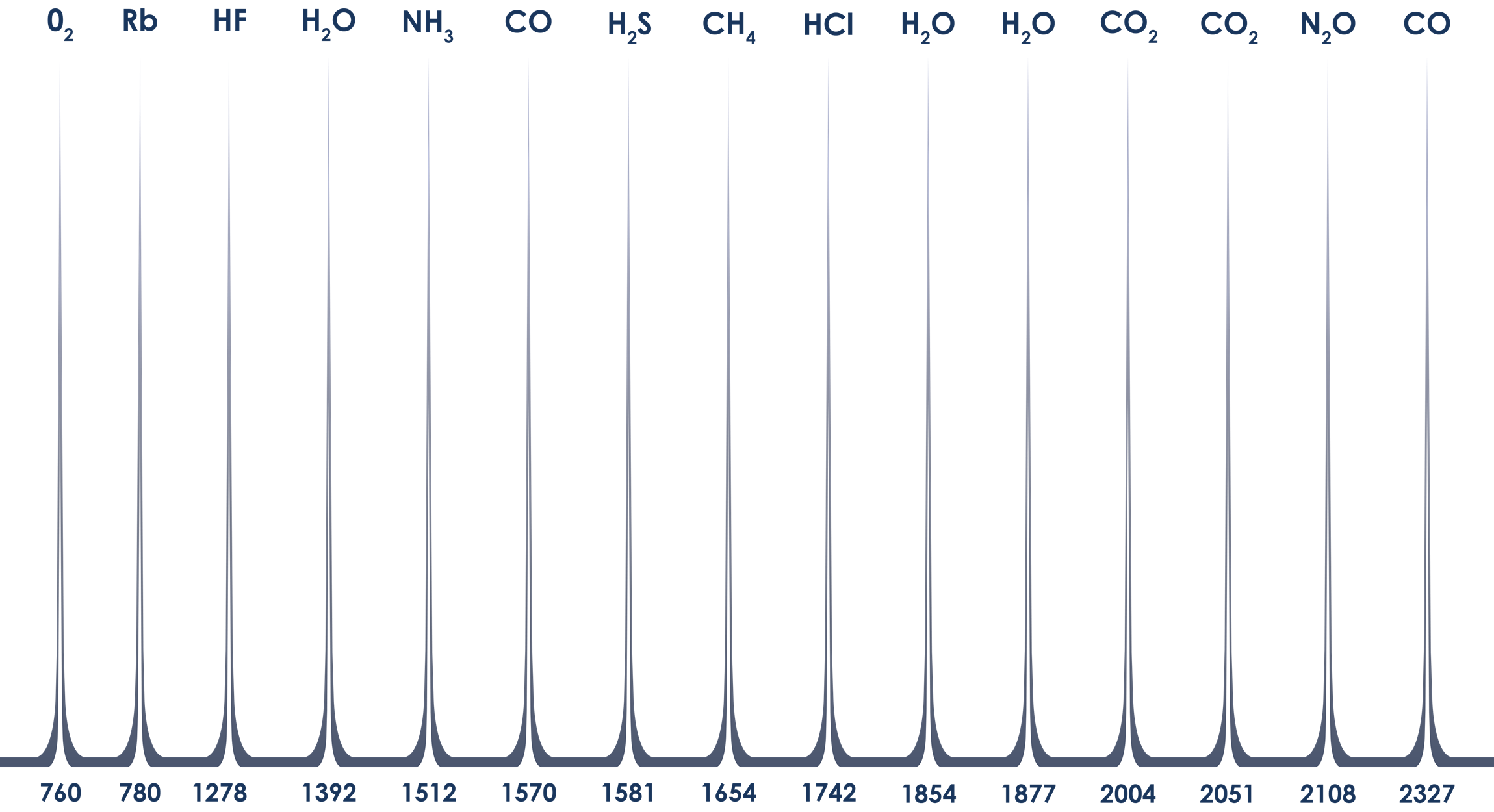
Tunable, Single-Frequency Laser Diodes for Gas Sensing
Single-frequency lasers have long been the cornerstone of standoff gas detection applications, particularly in traditional LIDAR (Light Detection And Ranging), DIAL (Differential Absorption LIDAR), and TDLAS (Tunable Diode Laser Absorption Spectroscopy) applications, where the sample needs to be accurately measured. More recently, as single-frequency laser diodes have become more common and less expensive, with a larger measurement range and compact size, they are being utilized in more localized and industrial gas sensing applications.
What is TDLAS?
Laser based Tunable diode laser absorption spectroscopy (TDLAS, and sometimes TDLS, TLS, or TLAS) relies on the wavelength-dependent absorption characteristics of various atoms and molecules (species), utilizing wavelength tunable diode lasers as a light source to measure gas concentration levels, temperature, flow velocity, and pressure of various gases. The basic idea involves tuning the wavelength of a laser diode over the spectral absorption line of a particular target gas stream, measuring the intensity of the transmitted radiation. Utilizing the Beer-Lambert law, the transmission intensity can be related to the concentration measurement of the species of interest, for example, through signal processing. When compared to other gas detection methods such as quartz-enhanced photoacoustic spectroscopy (QEPAS), photothermal spectroscopy (PTS), and cavity ring-down spectroscopy (CRDS), TDLAS is strongly adaptable to more complex environments, has an improved detection limit, high sensitivity and selectivity, high resolution, attractive pricing, and precisely meets the needs of most specific applications.
TDLAS Applications
There are basically two approaches to TDLAS applications. In one approach, the gasses of interest are extracted into a sampling measurement cell. To increase detectability, a multipath configuration is typically utilized, where the laser light travels multiple times through the gas cell, reflecting off mirrors along the optical beam path. The second approach involves in situ measurements of the species concentration, temperature, velocity, and pressure, as mentioned above. In this approach the laser beam is directly introduced to the measurement area, rather than extracting the gas to a test area. TDLAS allows the real time monitoring of system control parameters in industrial applications (e.g., TDLAS methane detector or hydrogen fluoride detector)thanks to its high sensitivity and fast response times. Some TDLAS application examples include:
- General gas analysis, gas monitoring, gas detectors
- Emissions monitoring
- Environmental monitoring
- Greenhouse gas / global warming analysis
- Combustion and flow analysis
- Trace species measurements
- Process monitoring & control
- Plasma processing
- TDLAS lyophilization (freeze-drying)
- Selective catalytic reduction (SCR)
- Wavelength modulation spectroscopy (WMS)
TDLAS Wavelengths and Molecules of Interest
A large number of the gas molecules of interest for gas sensing have strong infrared absorption bands in the near-infrared (NIR) and short-wave infrared (SWIR) regions, for example; ammonia (NH3) at 1512 nm, water (H2O) at 1392 nm & 1877 nm, methane or natural gas (CH4) at 1654 nm, and carbon dioxide (CO2) at 2004 nm. As a result, our propitiatory Discrete Mode (DM) single-frequency laser diode technology is an ideal solution for this application, available in emission wavelengths from 1270nm up to 2300nm.
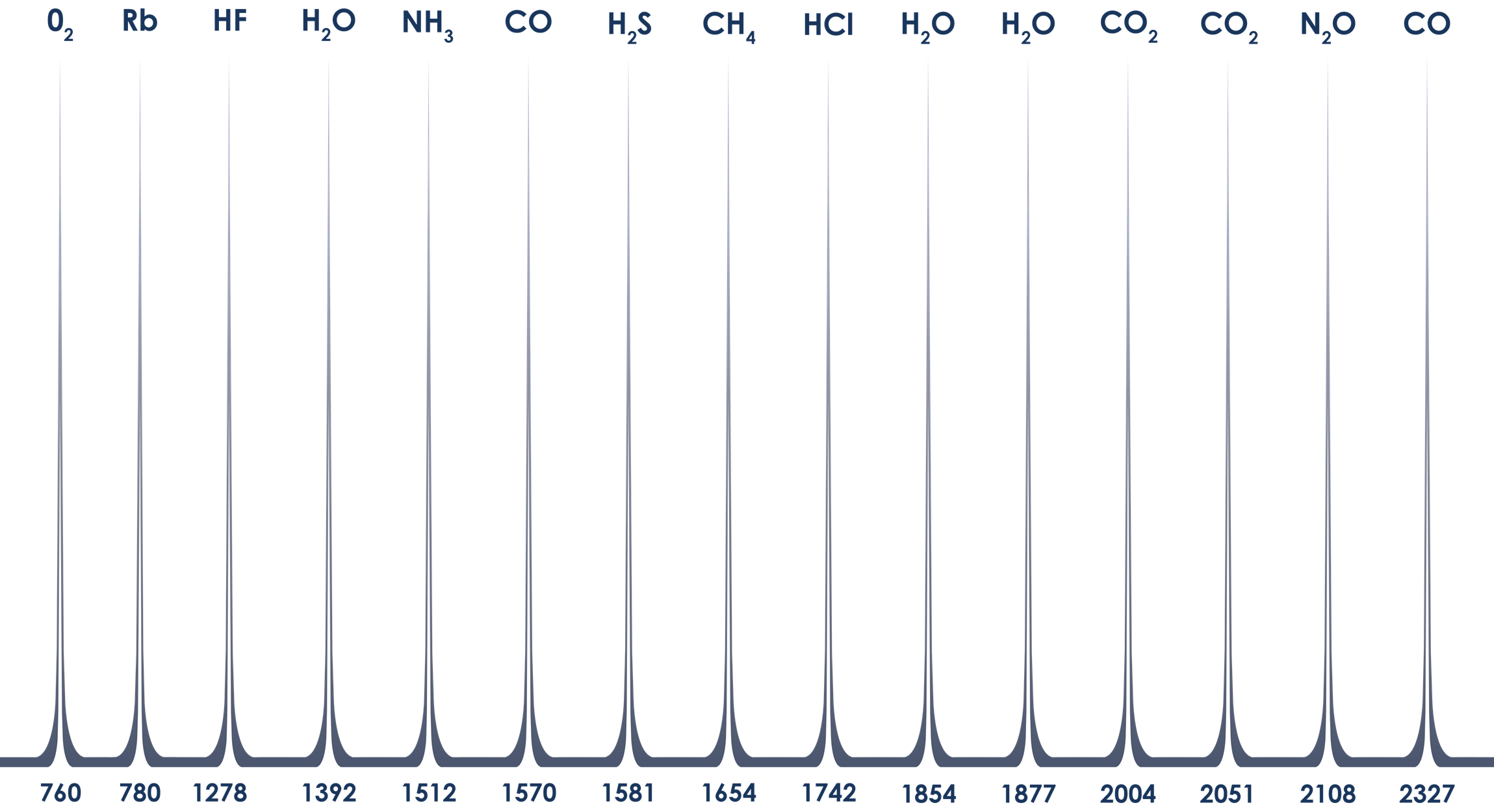 |
Discreet-Mode – DFB-Like Technology
These REP Series lasers, featuring state-of-the-art Discreet-Mode (DM) technology (a DFB-like technology), allow for excellent side mode suppression ratio (SMSR – up to 40dB) and narrow linewidth (<2MHz), which make them an effective solution for Gas Sensing and scientific needs. Since laser-based gas sensors require excellent tuning characteristics, our DM lasers are the ideal choice as they feature mode-hop-free tuning over a minimum of 2nm.
The Importance of Side-Mode Suppression Ratio (SMSR)
In a hypothetically perfect laser, all of the laser power produced would be contained within the main spectral peak. However, in reality, the power distribution is not as ideal and the side peaks or side modes of the laser profile contain some percentage of the total output power. A Distributed Feedback (DFB) laser’s side-mode suppression ratio (SMSR) is a value that explains the amplitude delta between the main mode and the most significant side mode in decibel units (noise ratio). A typical SMSR value would be greater than 30dB, which indicates that most of the power resides in the main spectral peak. High-quality, high-performance DFB laser diodes boast even higher SMSR values, and thus generate a greater ratio of total power within the main mode, compared to the side modes.
The Drawbacks of Mode Hopping
A mode-hop-free tuning range is desirable for TDLAS. Mode hopping in semiconductor lasers (longitudinal mode hopping), primarily a phenomenon of interest when discussing single-frequency lasers, involves the laser’s operation on a single resonator mode, which suddenly switches to another mode. Typically, this so-called mode hopping occurs when tuning the wavelength of a laser diode. However, many external influences can cause mode hops, including temperature changes, fluctuations in laser resonator length, mirror vibrations, changes in pump power, or external optical feedback. When a mode hop occurs, the new mode suddenly becomes dominant, fully taking over the optical power, generating laser intensity noise (mode hopping noise), power fluctuations, mode hopping frequency changes, and making it challenging to perform smooth, continuous wavelength tuning.
Discreet Mode, Single-Frequency Laser Diodes for TDLAS
In our DM laser diodes, single-frequency operation is achieved by introducing index perturbations etched into a few specific locations along the wave-guide. This manipulates the Fabry-Pérot cavity loss, resulting in the enhancement of one longitudinal mode and the suppression of all others, as can be seen in the figure below. This results in a single-mode output spectrum with >40dB SMSR. To ensure similar performance from a DFB laser with a stable single-frequency operation requires asymmetric or low reflectivity coated laser facets, which can induce either modal instability or linewidth broadening.
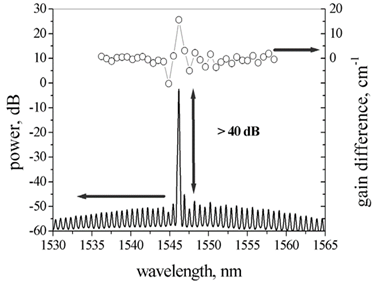
How Can We Help?
At RPMC Lasers we currently offer these single-frequency REP Series, mode-hop-free tunable laser diodes in a wide variety of packages depending on the application, operating environment, and integration requirements. Our technology platform gives you the freedom to specify your laser characteristics from the widest possible range of electro-optical parameters. With wavelengths spanning 1270nm to 2300nm, coupled with package options ranging from simple TO-Can to a PM fiber pig-tailed butterfly package, we can deliver a laser source to completely meet your requirements in the shortest time frame and at a competitive cost to fit your budget. Whether you require a minor modification to an existing standard product or wish to specify a custom laser product from the ground up, our team of laser physicists and engineers are on hand to assist you from start to finish to ensure that you get the support you need, as well as a laser that completely satisfies the needs of your custom application.
See Our Discreet Mode Diode Lasers
If you require longer wavelengths in the mid-infrared/mid-wave infrared (MIR/MWIR) or long-wave infrared (LWIR) spectral regions (≈4µm – 16µm range) for high-resolution spectroscopy applications, RPMC provides a selection of Quantum Cascade Lasers (QCLs). These QCLs and distributed feedback (DFB) QCLs are perfect for various laser spectroscopy applications, notably for the detection of CH3i and UF6, but also PuF6, NpF6, HCN, BTEX, check out this article titled: “Unprecedented QCL Wavelengths for Enhanced Molecular Spectroscopy!“
Discreet Mode Diode Laser Package Options:
The preferred package depends on the application, operating environment, and integration needed. We offer various packages suited to meet your needs.
14-pin butterfly
|
Our 14-pin butterfly is designed with stability and ease of use in mind. Tested to Telcordia standards, it is the ideal package for thermal stability and fiber coupled integration. Key features – Temperature controlled |
TO-39 with TEC
|
We have worked with industrial partners in order to design a free space package specifically for the gas sensing industry. The TO-39 incorporates an internal TEC for accurate wavelength control. Key features – Temperature controlled |
TO-56
|
Typically used for high volume communications applications, our TO-56 package is tested to Telcordia standard and is RoHS qualified. Available with flat window or with a ball lens. Key features– Free-space design
– Hermetically sealed – Flat window or 1.5 mm ball lens |
High speed7-pin butterfly
|
The high speed and pulsing capabilities of our DM and FP laser diodes can be fully exploited using the high speed 7-pin butterfly, which incorporates a K-connector for modulation up to 10 GHz. Key features– K-connector for high speed modulation
– PM/SMF coupled with FC/APC – Built-in optical isolator |
DX-1 Module
|
Our proprietary DX-1 incorporates the butterfly module with an integrated current driver and TEC controller. Designed for ease of operation, it is the ideal platform for high stability gas detection or remote sensing. Key features – Integrated driver and TEC controller |
These single-frequency laser diodes are ideal for trace gas detection in TDLAS analyzers and other scientific applications. The REP series of DM laser diodes possess inherently narrow linewidth relative to traditional DFBs, in addition to superior electro-optical performance with respect to output power, threshold, SMSR (up to 40dB) and tuning characteristics. These devices are available as OEM components (14-pin BF packages and TO-cans), as well as modules complete with drive electronics and TEC control. All of these single-mode lasers are of monolithic construction making them ideal for operation in environments prone to mechanical shock and vibration. We have supplied lasers to a range of aerospace applications including the European Space Agency’s next generation atomic clock development program. If you would like to learn more about these Discreet Mode Laser Diodes, please contact us with the button below, or email us at info@rpmclasers.com!

 SHIPS TODAY
SHIPS TODAY 